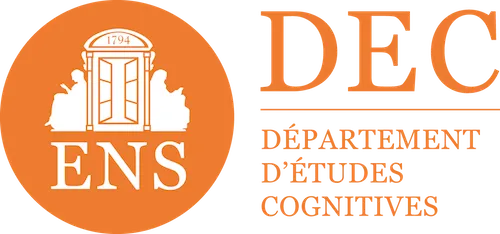

Collaborative learning: definition and benefits
Faced with the rapid evolution of skills and the need for continuous training in companies, the Collaborative learning is an essential method. Based on the sharing of knowledge and collective intelligence, this collaborative learning transforms training into a social, engaging and sustainable experience.
For companies and training organizations, it is a real opportunity to mobilize internal expertise, to value the knowledge of employees and to strengthen the learning culture.
What is Collaborative Learning?
Collaborative learning, or collaborative learning, refers to a pedagogical method based on collective intelligence. Concretely, it is the learners themselves (employees, managers, internal experts) who actively participate in the creation, sharing and enrichment of training content.
Rather than adopting a top-down and centralized approach, collaborative learning focuses on peer participation, sharing internal knowledge and a group dynamic that promotes motivation and team spirit.
In a professional context in constant evolution, where capacities must adapt quickly, this system is essential as an agile and human response to the challenges of continuing education.
The various methods of collaborative learning
It can take several forms in business:
- Co-development groups: collaborators come together to solve concrete problems, share feedback from the field and experiment with new approaches together.
- Peer learning: employees help each other and teach each other specific skills, reinforcing solidarity and the rise in collective competence.
- Content creation by business experts: employees design courses shared with others, guaranteeing the relevance and contextualization of the content.
- Internal forums or social learning: exchanges of best practices and sharing of experiences online, promoting collaborative monitoring, emulation and a real community of apprentices.
The objective remains the same: to promote the circulation of knowledge, to stimulate the motivation of learners and to create a dynamic and sustainable learning culture at work.
Collaborative learning: the advantages
A decentralized approach that is accessible to all
One of the first benefits is to remove knowledge. Each employee becomes an actor of the training process, regardless of position or seniority.
The author tool of the Didask platform precisely allows teams to design educational content adapted to their business realities, without the need to be an expert in educational engineering.
A relevant approach, as close as possible to the field
Collaborative pedagogy is contextualized. It is based on lived situations by learners, which encourages the direct transposition of knowledge into daily work.
This fits the approach perfectly Adaptive learning integrated into the Didask solution: each course is personalized according to the learner profile.
A quick approach to implement
Thanks to digital devices like Didask's LMS tool, it becomes simple to quickly deploy resources that are co-constructed, peer-validated and distributed on a large scale.
The Didask training catalog can also be enriched with internal resources, for meet specific needs of each organization.
An evolving approach
Apprenticeship in association allows make courses evolve continuously, over the course of field feedback.
This ability to adjust modules based on feedback or business developments is facilitated by the AI assistant integrated into the Didask platform, which helps to optimize educational paths.
A results-oriented approach
Finally, collaborative learning measures its effectiveness through concrete indicators : skills improvement, engagement rate, operational efficiency. The modules are designed to have a real impact on society's goals.
The Didask LMS platform offers numerous ways toEvaluate your learners to follow their educational progress.
Collaborative learning: the limits
Like any approach, it has its challenges. For example, it can:
- require a corporate culture favorable to exchange;
- ask for time to animate and coordinate contributions;
- raise quality issues if resources are not managed.
This is why a solution like Didask, with its educational structuring functionalities via educational AI, makes it possible to guarantee the coherence of the courses created in association.
Example of application in business
Take the example of a large industrial group wishing to accelerate the development of its technicians' skills. By mobilizing field experts to create concrete courses on technical gestures, then integrating them into the Didask LMS, the organization:
- values internal knowledge;
- reduces training times;
- involves teams in their own development.
This process reinforces team cohesion and the culture of continuing education.
How does collaborative learning work?
An agile response to the needs of companies
It allows a company to react quickly to market transformations. Employees produce, share and adapt their content, without depending on a centralized service.
Thanks to Didask's AI assistant, each team can benefit fromsmart support during the learning journey.
A human-centered approach
This model is based on peer trust, active listening, and teamwork. The learner feels involved in their development and is more committed.
It's a real social dynamics which is being put in place, reinforced by the social learning tools integrated into Didask's LMS platform.
A way of bringing corporate culture to life
Each society has a culture, a vocabulary, and an approach. Collaborative learning makes it possible to stream these items, through training, field feedback, etc. It decentralizes culture while making it live on a daily basis.
3 concrete uses of collaborative learning
Making teams more flexible
By giving employees the means to train at their own pace and on subjects that concern them directly, collaborative learning supports the logic of distance learning or hybrid work.
Strengthen motivation around training
Employees involved in creating training courses are naturally more motivated. This involvement reinforces their commitment in apprenticeship, but also in company missions.
Building a sustainable learning culture
By establishing a participatory model, the organization is developing a long-term strategy for the skills development. Each training course becomes an opportunity to change collective practices.
Collaborative learning: response to the online training crisis
Faced with traditional e-learning platforms that are often not very engaging, collaborative learning provides a more lively and human alternative. It responds to the disaffection of learners for standard courses and offers a active, contextualized and more effective experience.
With the Educational AI by Didask and his partner training catalog, this approach is transforming the way teams learn. The platform structures collaboration through proven teaching methods rather than using real-time tools.
Structuring collaborative learning with Didask
The Didask platform supports this collaborative dynamic thanks to:
- The authoring tool optimized by AI to create courses 10x faster
- The LMS tool mainstreamed to follow up on the results,
- The AI assistant Who guides the design and supports the learners
- Methods for organizing collaboration : group work, mixed levels, assignment of specific roles
- The Adaptive learning who customizes the courses according to each profile
- The catalog of expert courses enriched by partners
Didask structures collaborative learning through its pedagogy based on cognitive science. The platform makes it possible to organize group activities and collective projects, while synchronous social interactions rely on external tools (forums, videoconferences) or specific educational instructions.
This approach allows businesses to deploy a structured and measurable collaborative learning system. The focus is on pedagogical effectiveness and the real impact on skills.
At a time when training models are evolving, collaborative learning is becoming a strategic lever for transformation. With Didask, organizations have the methods and tools to structure this approach and guarantee an increase in collective skills.
Make an appointment directly with our eLearning experts for a demo or simply more information.













